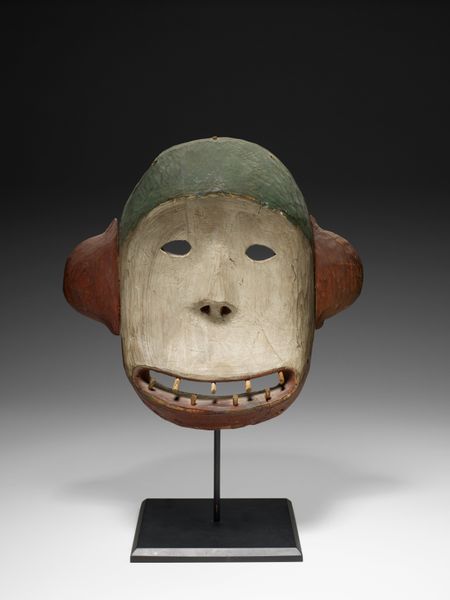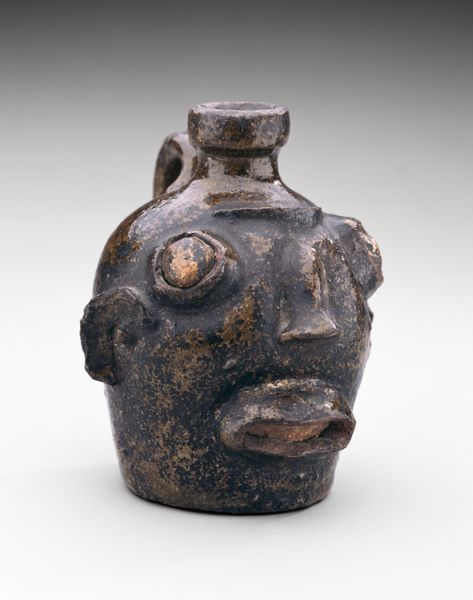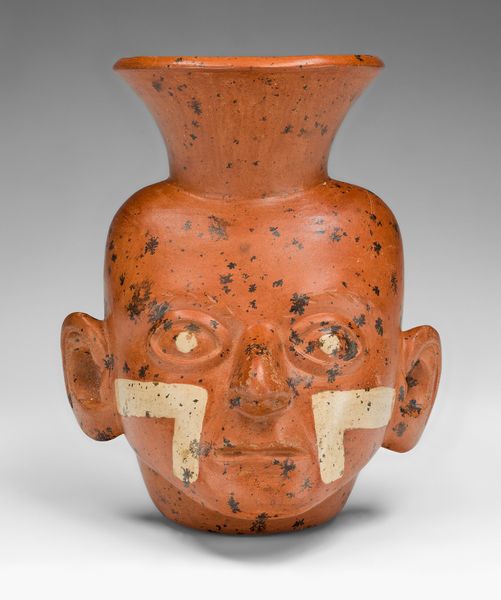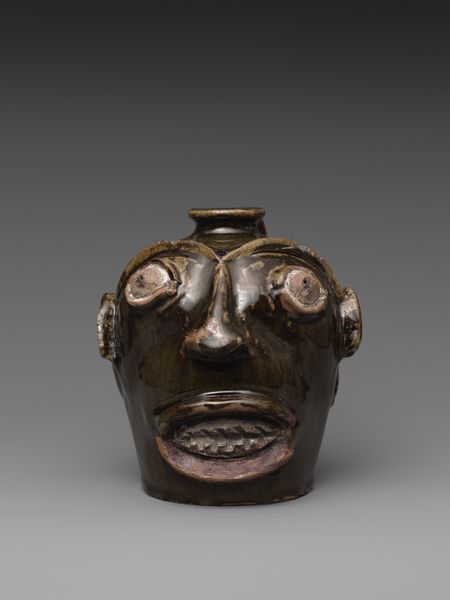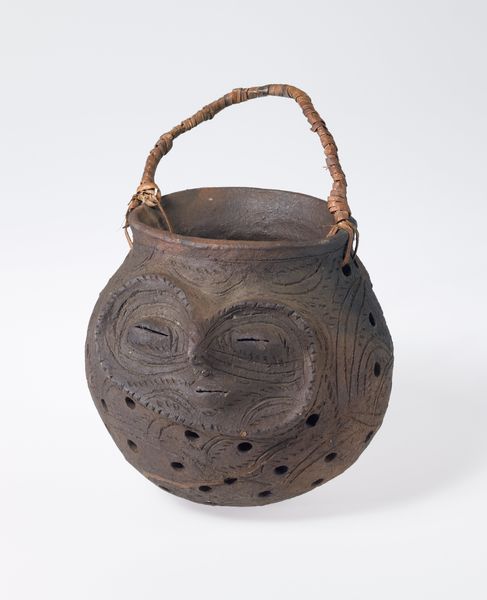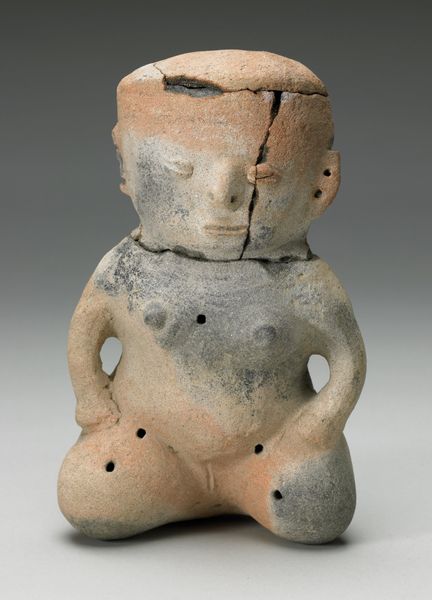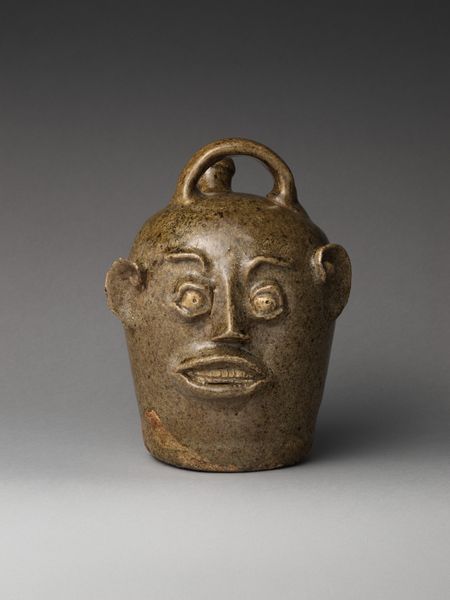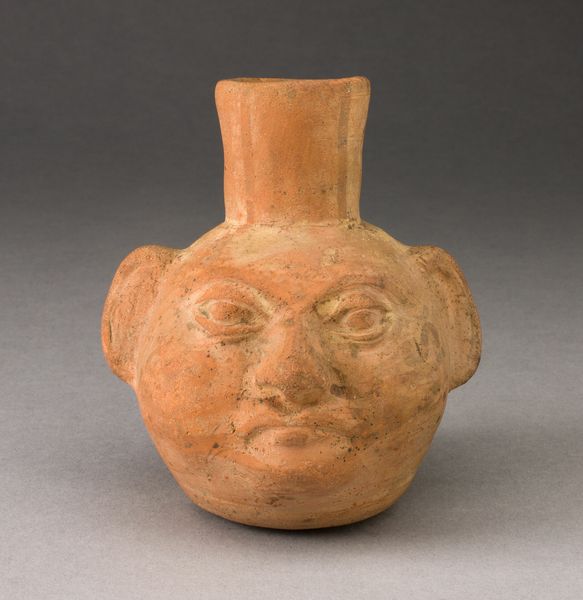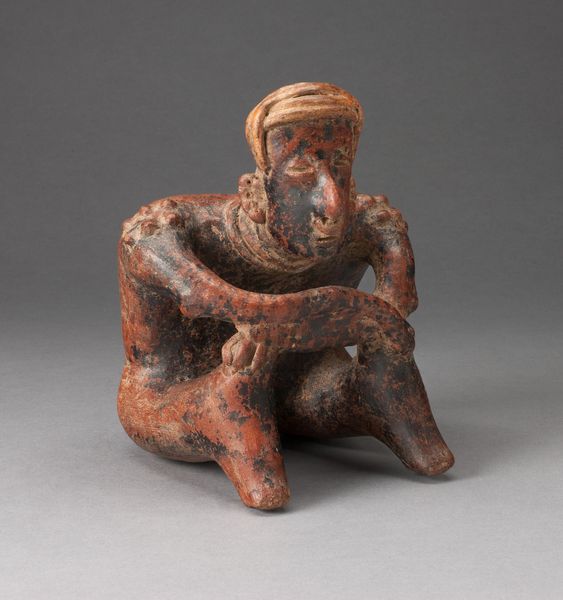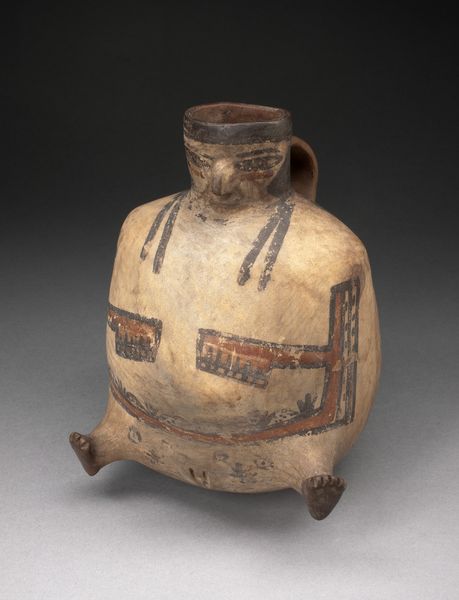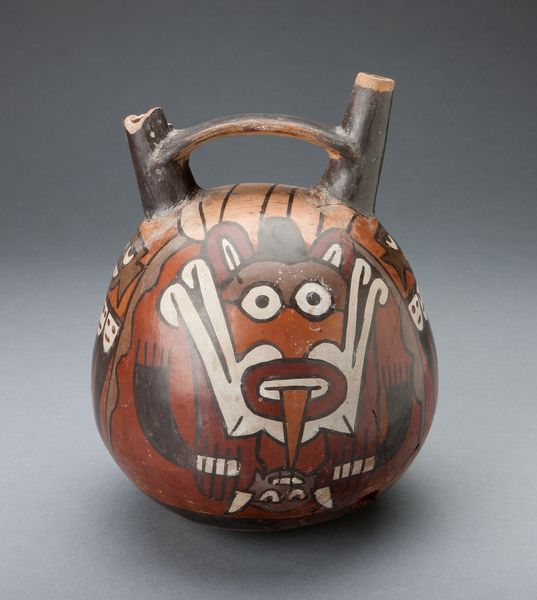
metal, sculpture
#
portrait
#
metal
#
sculpture
#
indigenous-americas
Dimensions: 17.2 × 22.5 cm (6 3/4 × 8 7/8 in.)
Copyright: Public Domain
Editor: Here we have a Moche mask, crafted sometime between 100 and 500 AD from ceramic and metal. The wear and tear really strike me. What story do you think its imperfections are trying to tell? Curator: That weathering is key, isn't it? It forces us to think about time, power, and the body. Moche society was deeply stratified. The elite used objects like this to project authority, often drawing on potent religious symbolism. How do you see the power dynamics at play here? Editor: Well, the materials feel really significant, especially the contrast of the ceramic and metal. One seems almost delicate, the other durable, like the contrast of humanity and... divinity? Curator: Exactly! And consider the labor involved. Someone, or more likely many people, were compelled to mine, process, and sculpt these materials. The mask then becomes evidence of forced labor and resource control. What does the face itself convey to you? Is it individualistic or idealized? Editor: Hmm, it’s definitely stylized, and seems to represent some specific person but it’s hard to tell with all the damage it has endured over the years... I wonder what significance it had in its own era? Curator: Yes! It compels us to question whose face is being memorialized. Is this an act of reverence, or perhaps an assertion of dominance? Think about contemporary discussions around portraiture – who gets represented, and how? What impact does that have? The mask becomes a mirror reflecting not just a face, but a whole society's values. Editor: That makes me consider the indigenous Americas through a totally new lens. It's incredible how much history a single object can embody. Curator: Absolutely. It challenges our preconceived notions and invites a critical engagement with the past.
Comments
No comments
Be the first to comment and join the conversation on the ultimate creative platform.

